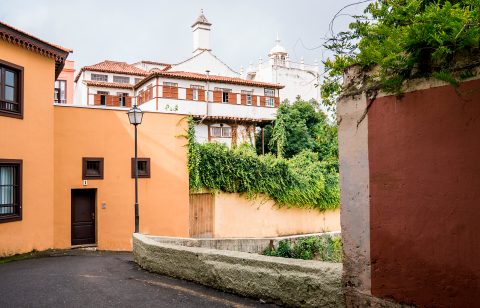1. Araujo Ravine

You’re now at the Araujo ravine, the main natural obstacle that divided the historical centre until the 1960s.
This ravine was one of La Orotava’s main sources of wealth after its foundation. Water ran through it year-round and it was used to irrigate the area. It’s hard to imagine the amount of water that used to flow through it looking at the current channels. However, it was sometimes considered a hazard when the water levels were high. During one such flood, one of the most-remembered tragedies took place. At the end of the 19thcentury, a Cuban maid was living in a house near the ravine. She was much-loved in the town because she was a great singer. Her Cuban melodies were a real novelty in La Orotava at that time. One fine day while she was washing some clothes, the rising water dragged her down the ravine and ended her life.
The risk of flooding has been minimised by channelling and redirecting the water, and it only flows high now during heavy rain.
Continue down along the ravine until you find one of La Orotava’s most captivating alleys on the left: Calle Ascanio. Walk through this alley until reaching Calle Tomás Zerolo, one of the town’s main thoroughfares, also known as Calle del Agua. Stately homes abound along this street. And now let’s walk a little bit further down the street, to the Prieto Mendoza house at number 22.
